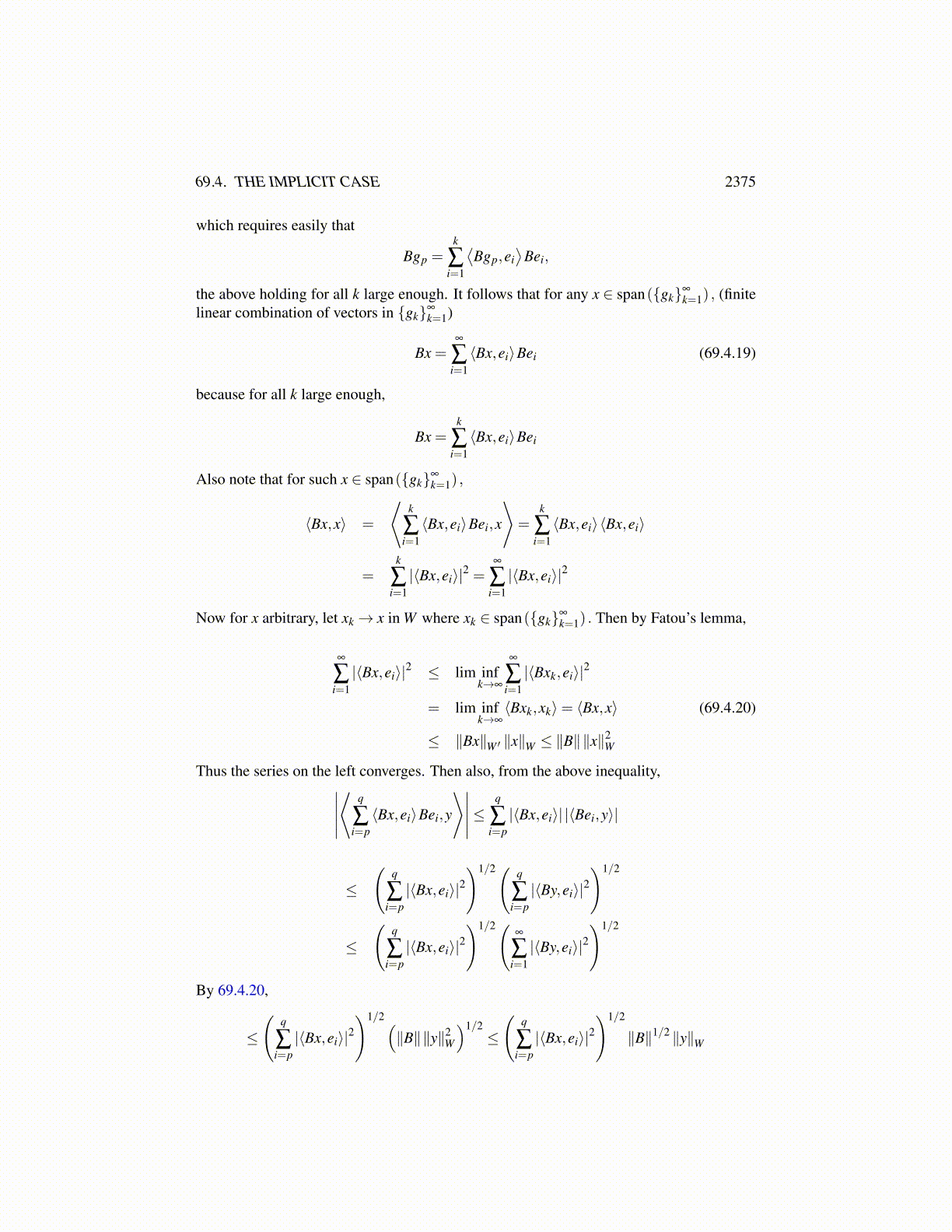
69.4. THE IMPLICIT CASE 2375
because ⟨Bxk,xk⟩ is zero by what was just shown.Thus assume there is such a first index. Let
e1 ≡gn1
⟨Bgn1 ,gn1⟩1/2
Then ⟨Be1,e1⟩= 1. Now if you have constructed e j for j ≤ k,
e j ∈ span(gn1 , · · · ,gnk
),⟨Bei,e j
⟩= δ i j,
gn j+1 being the first for which⟨Bgn j+1 −
j
∑i=1
⟨Bgn j+1 ,ei
⟩Bei,gn j+1 −
j
∑i=1
⟨Bgn j,ei
⟩ei
⟩̸= 0,
andspan
(gn1 , · · · ,gnk
)= span(e1, · · · ,ek) ,
let gnk+1 be such that gnk+1 is the first in the list{
gnk
}such that⟨
Bgnk+1 −k
∑i=1
⟨Bgnk+1 ,ei
⟩Bei,gnk+1 −
k
∑i=1
⟨Bgnk+1 ,ei
⟩ei
⟩̸= 0
Note the difference between this and the Gram Schmidt process. Here you don’t necessarilyuse all of the gk due to the possible degeneracy of B.
Claim: If there is no such first gnk+1 , then B(span(ei, · · · ,ek)) = BW so in this case,{Bei}k
i=1 is actually a basis for BW .Proof: Let x ∈W . Let xr ∈ span(g1, · · · ,gr) ,r > nk such that limr→∞ xr = x in W . Then
xr =k
∑i=1
cri ei +
r
∑i/∈{n1,··· ,nk}
dri gi ≡ yr + zr (69.4.17)
If l /∈ {n1, · · · ,nk} , then by the construction and the above assumption, for some j ≤ k⟨Bgl−
j
∑i=1⟨Bgl ,ei⟩Bei,gl−
j
∑i=1⟨Bgl ,ei⟩ei
⟩= 0 (69.4.18)
If l < nk, this follows from the construction. If the above is nonzero all j ≤ k, then l wouldhave been chosen but it wasn’t. Thus
Bgl =j
∑i=1⟨Bgl ,ei⟩Bei
If l > nk, then by assumption, 69.4.18 holds for j = k. Thus, in any case, it follows that foreach l /∈ {n1, · · · ,nk} ,
Bgl ∈ B(span(ei, · · · ,ek)) .